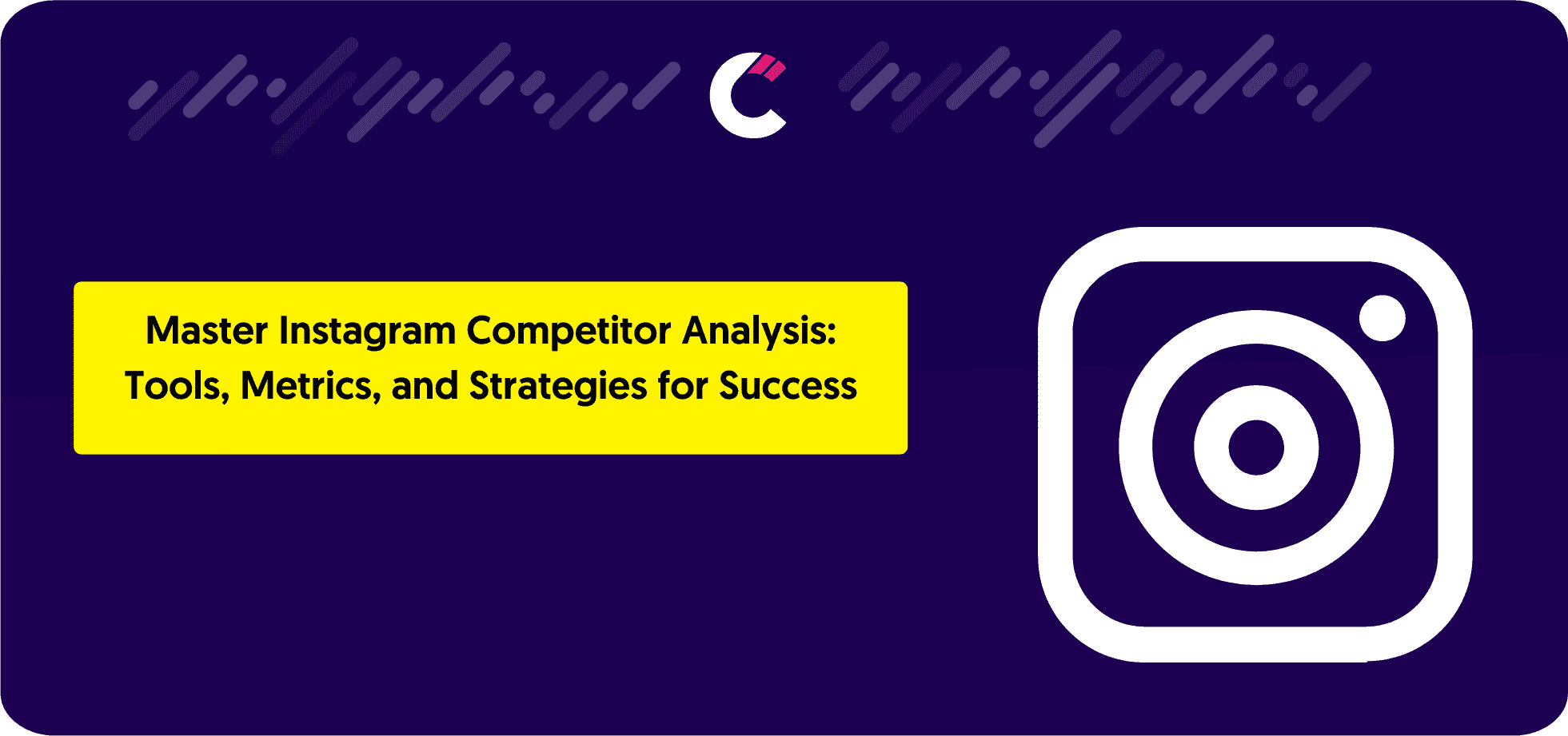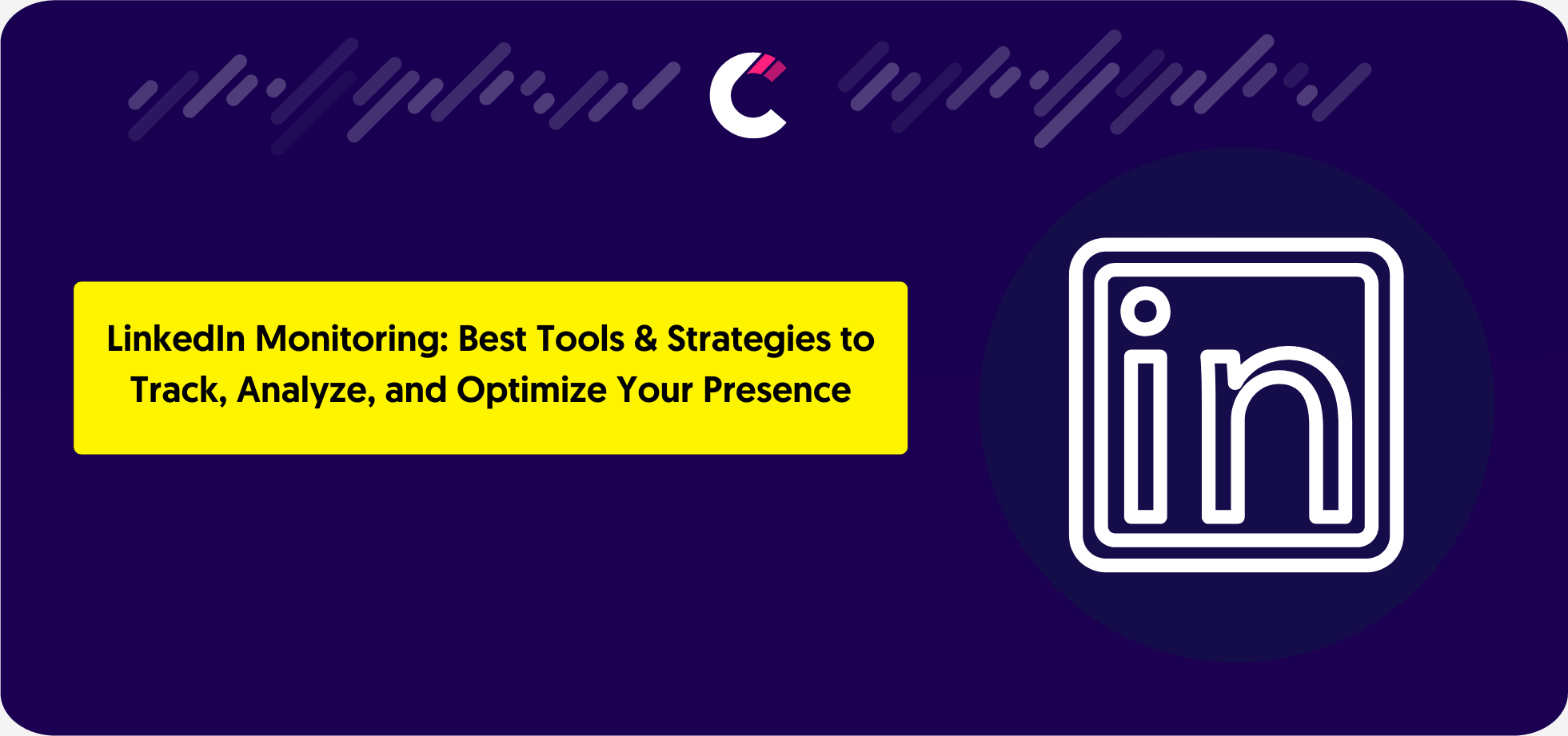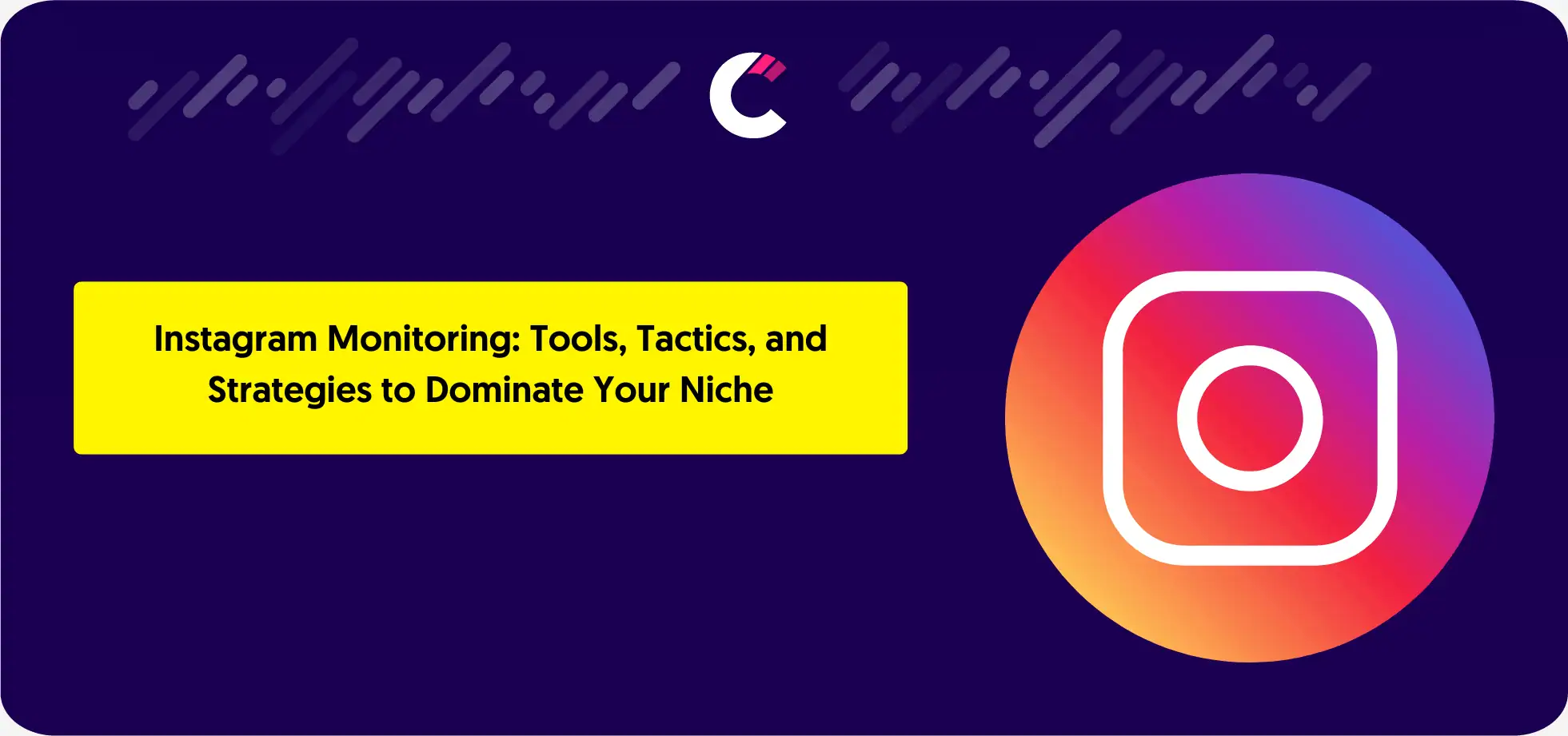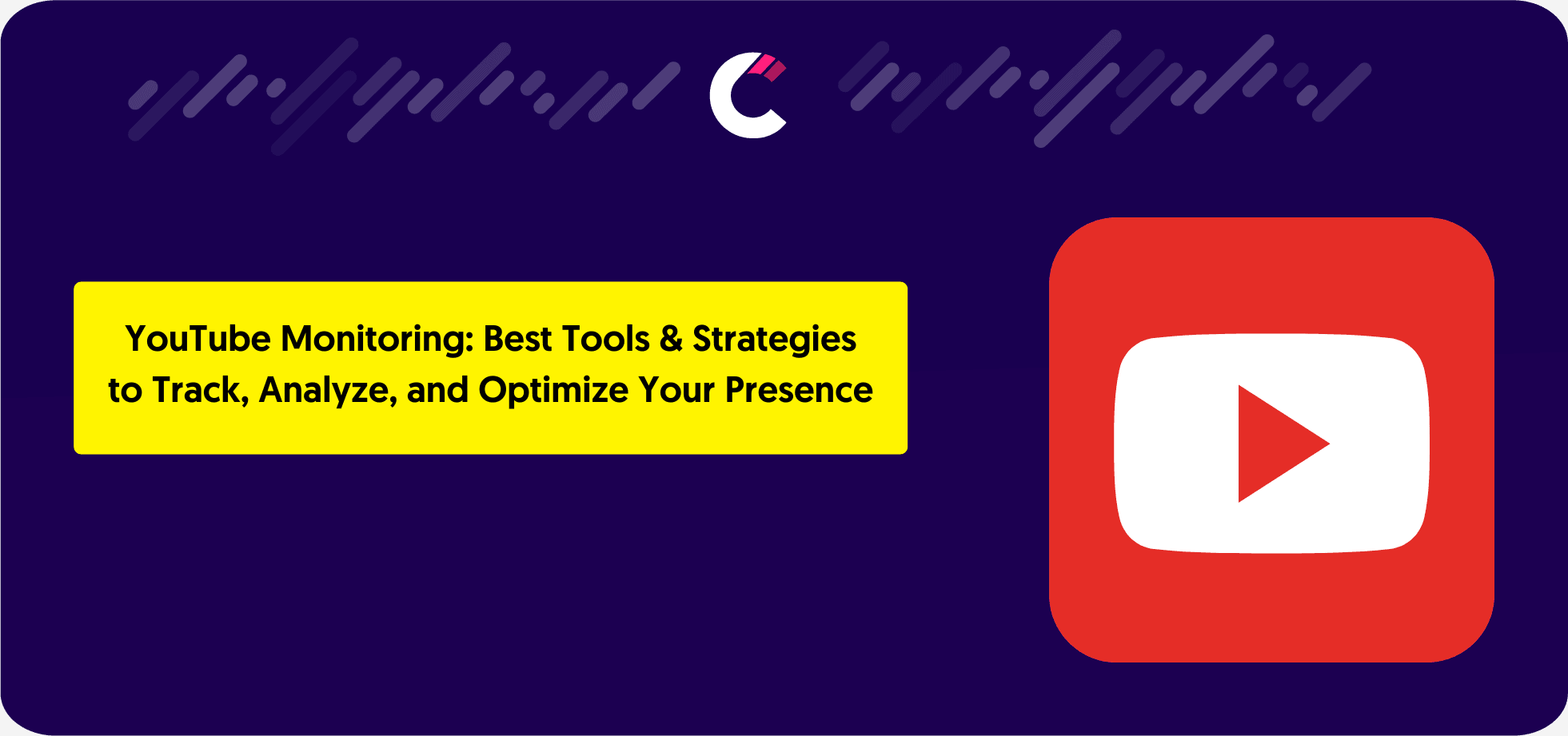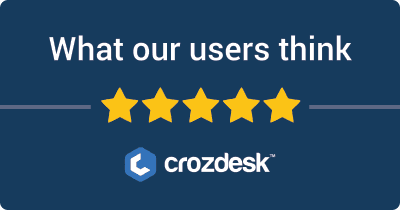What is Instagram Competitor Analysis?
Instagram competitor analysis is a structured approach to understanding the strategies and performance of businesses that target a similar audience on Instagram. This process helps you gain actionable insights by focusing on the following areas:
- Content Strategies: Analyse the type of content your competitors share, including themes, visual styles, and the tone of their captions. Pay attention to how they balance promotional, educational, and entertaining content.
- Audience Engagement: Evaluate how competitors interact with their audience through likes, comments, shares, and direct messages. Identify what types of posts generate the most engagement and why.
- Performance Metrics: Track key data points such as follower growth, engagement rates, publishing frequency, and hashtag effectiveness. These metrics provide a benchmark for assessing your own performance.
- Brand Positioning: Observe how competitors present their brand identity, from their bio to their overall aesthetic, to understand how they appeal to the shared audience.
By systematically analysing these aspects, businesses can refine their Instagram strategies, uncover opportunities for differentiation, and position themselves to achieve sustained growth in a competitive landscape.
Why Should You Do a Competitor Analysis on Instagram?
Conducting a competitor analysis on Instagram provides invaluable insights into your industry landscape and helps refine your social media strategy. By understanding how your competitors operate, you can uncover areas of improvement and discover opportunities to gain a competitive edge. This process enables you to better align your brand’s efforts with audience preferences and industry trends.
Establish Your Own KPIs Through Competitive Benchmarking
Setting measurable goals is crucial to Instagram success. By benchmarking competitor performance, you can define actionable KPIs:
- Analyse Competitor Metrics: Examine follower growth, engagement rates, and posting frequency to set realistic targets.
- Define Specific Goals: For instance, aim to increase engagement rate by 15% over three months.
- Track Progress Regularly: Measure your results against the benchmarks to ensure consistent improvement.
Identifying Content Gaps Through Competitor Analysis on Instagram
Uncovering content gaps is one of the most impactful outcomes of competitor analysis. Steps to identify these gaps include:
- Review Competitor Content: Look for themes or topics they’ve neglected or underexplored.
- Analyse Audience Feedback: Comments and interactions can highlight unmet needs or interests.
- Assess Engagement Trends: Identify areas where competitors struggle to connect with their audience.
Creating Better Content Based on Competitor Insights
Competitor analysis not only highlights gaps but also offers a roadmap to create better content. Actionable strategies include:
- Adopt High-Performing Formats: Leverage proven content types like carousels or short-form videos.
- Innovate Beyond Competitors: Introduce unique themes or topics that your competitors haven’t explored.
- Improve Visuals and Captions: Use insights to enhance the quality and appeal of your posts.
- Optimise Engagement: Post consistently at optimal times and engage actively with your audience.
How to Analyze Your Competition Using Our Free Instagram Competitor Analysis Tool
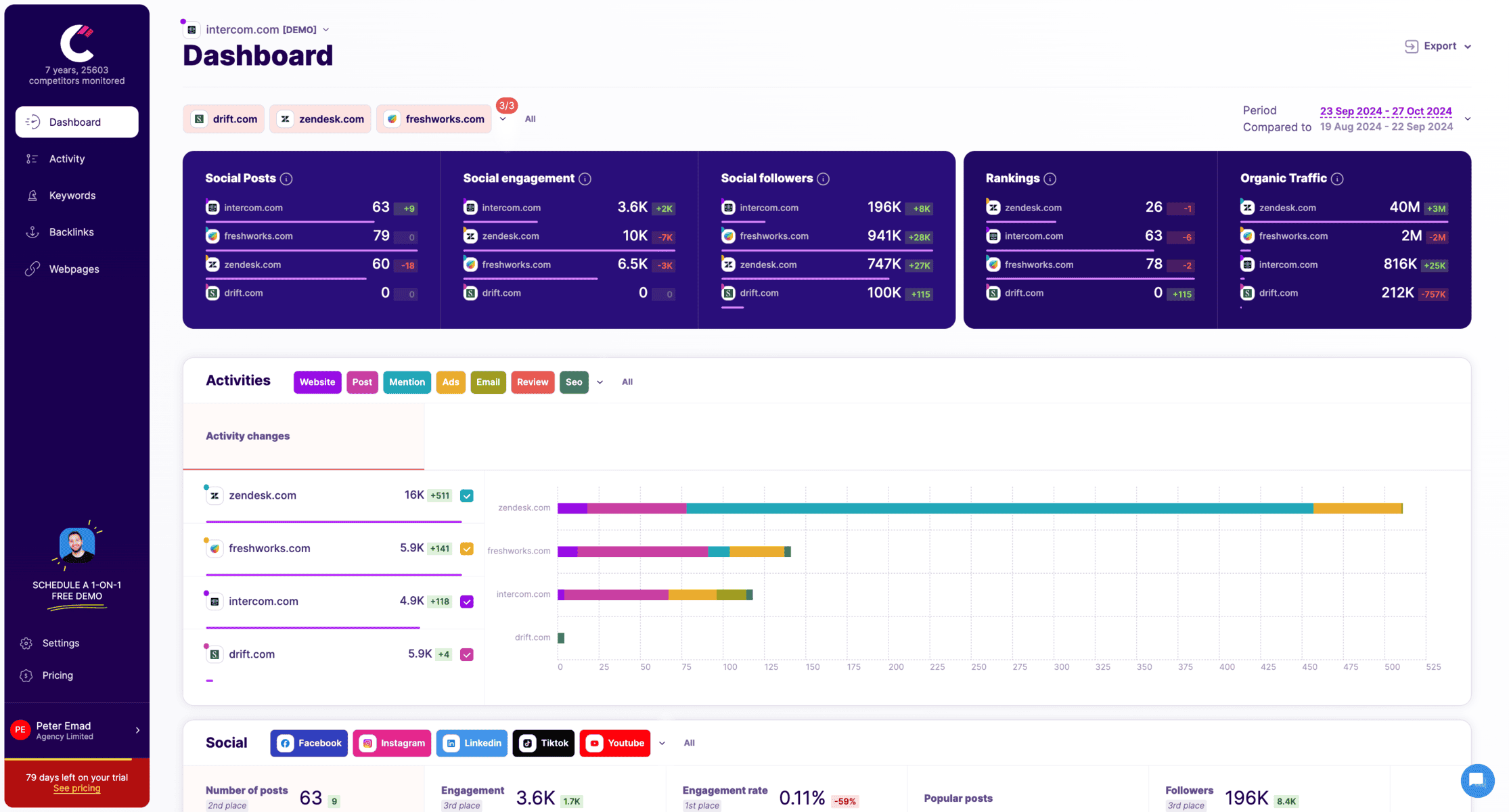
Conducting a social media competitive analysis can be streamlined and efficient with the use of Competitors App that helps you track social media pages easily. . Here’s how to do it:
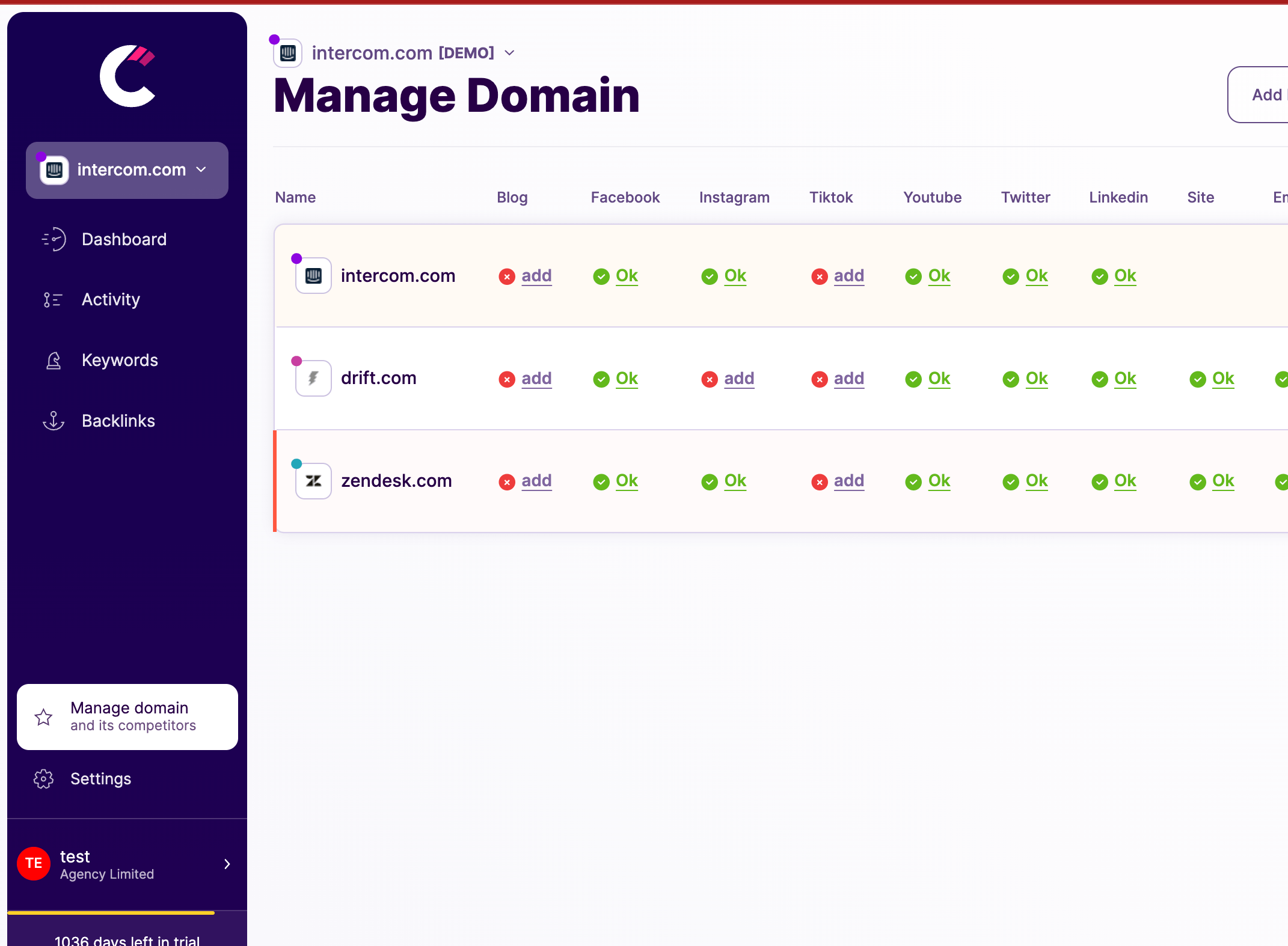
Step 1: Identify Your Competitors
The first step is to identify who your direct and indirect competitors are. These are the businesses that are vying for the same audience as you.
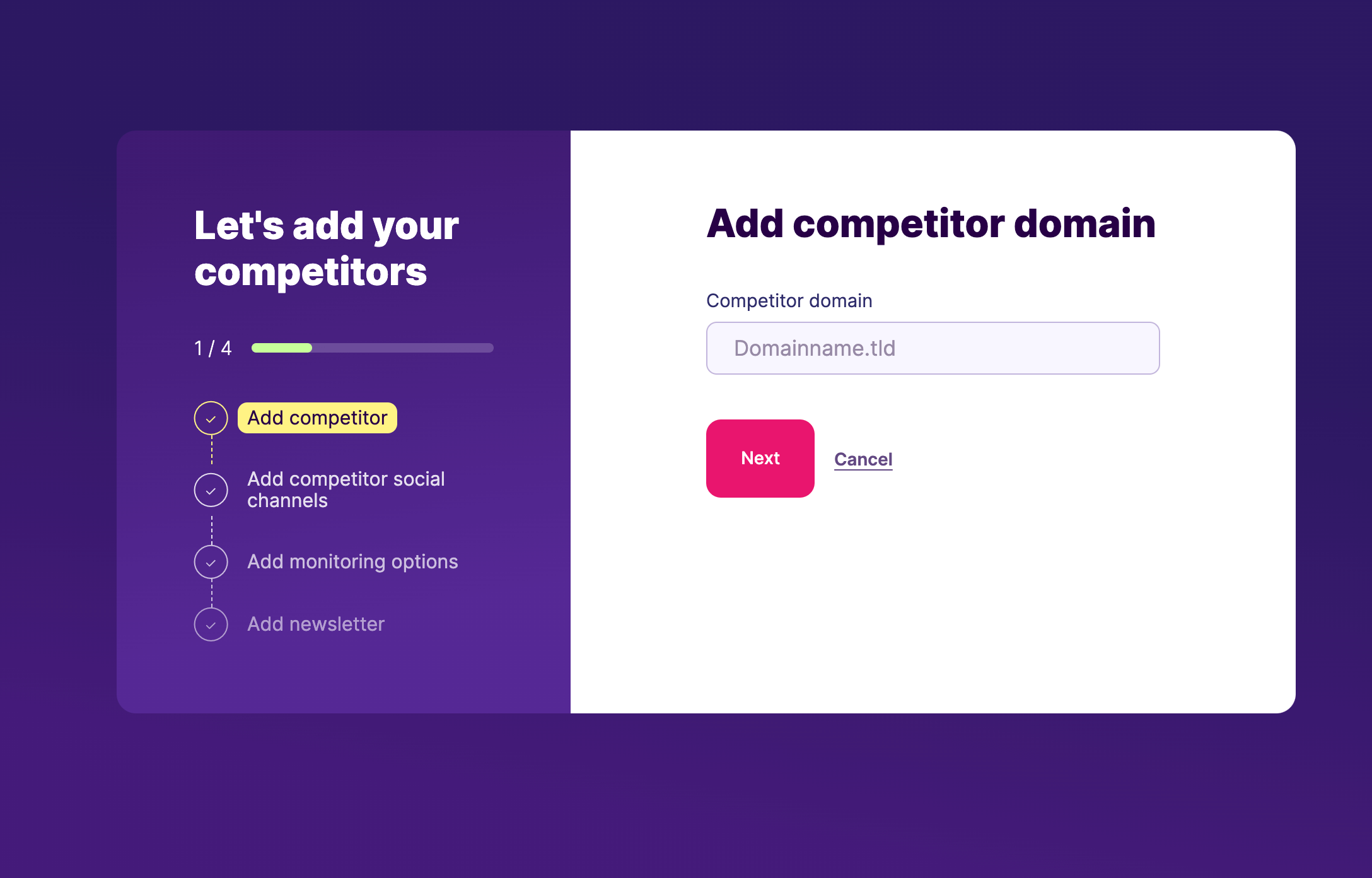
Step 2: Add Your Competitors
Once you have a list of your competitors, add them to Competitors App. This is a straightforward process that allows you to begin tracking their activities.
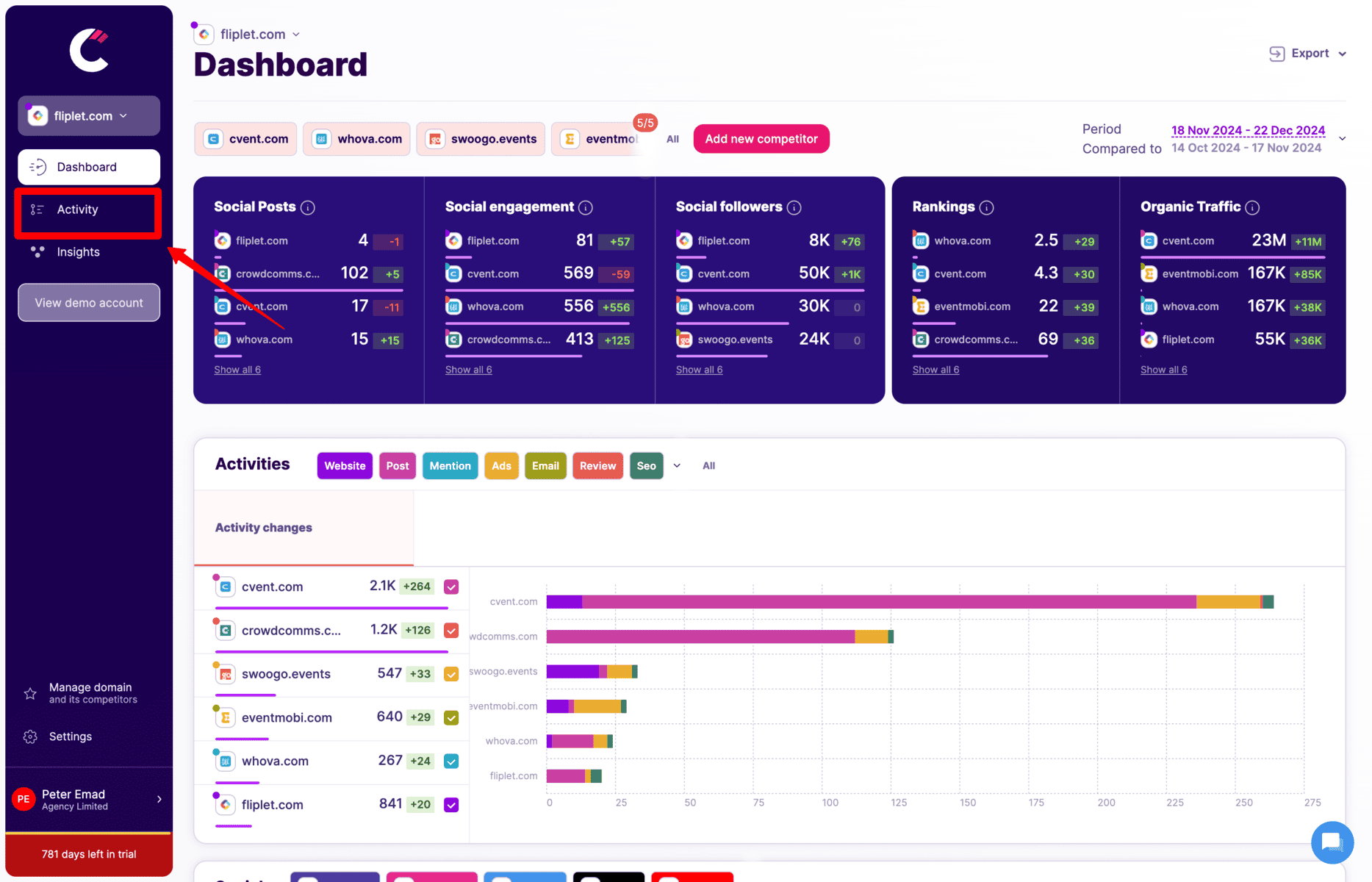
Step 3: Visit the Social Activity Timeline
In the app, navigate to the activity timeline. This feature provides a chronological view of your competitors’ social media posts along with their engagement, follower growth for each post.
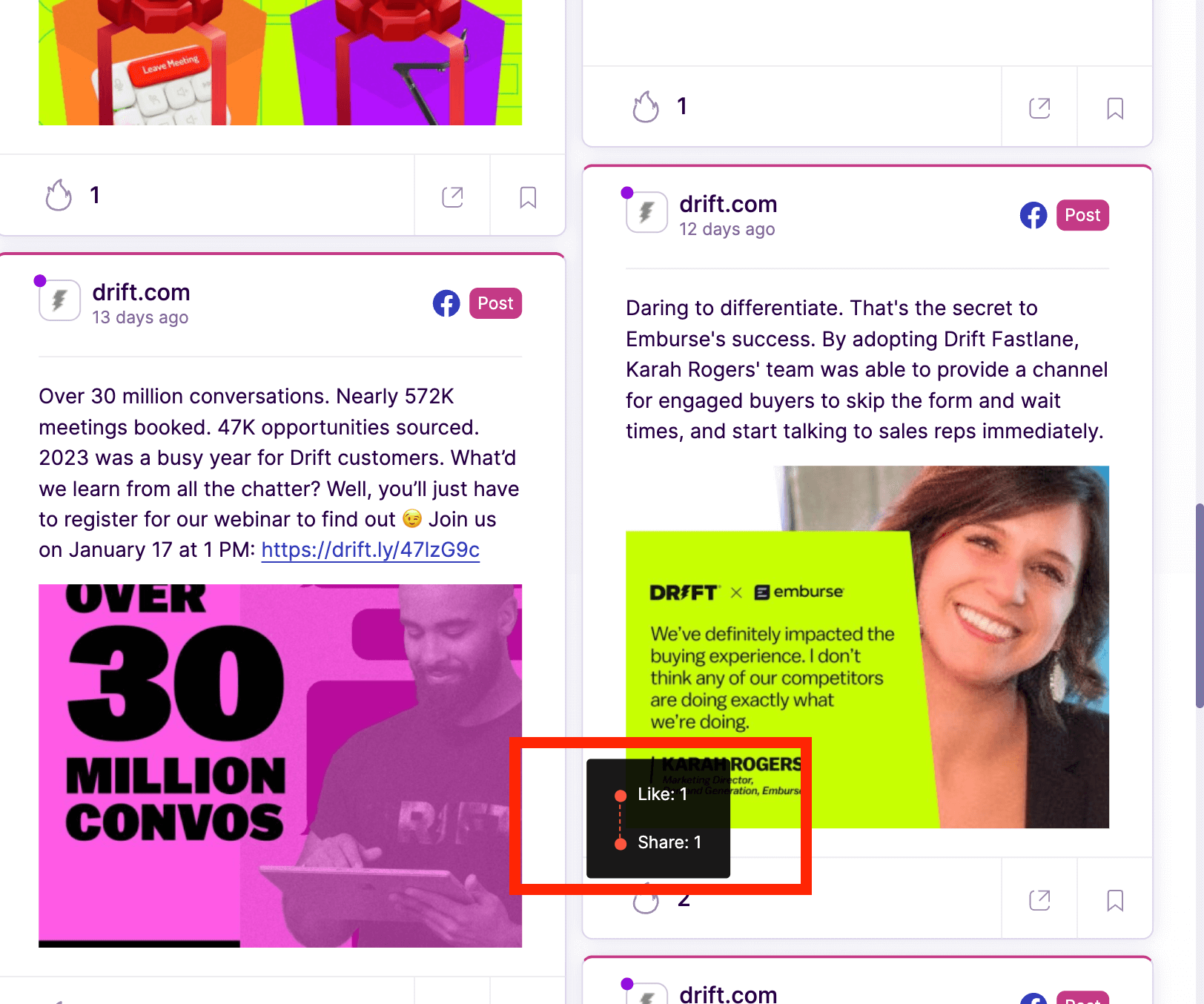
Step 4: Analyze Competitors’ Posts
Examine the content of these posts. Competitors App provides detailed metrics like engagement, likes, shares, and comments, which are crucial for understanding what types of posts are successful or not.
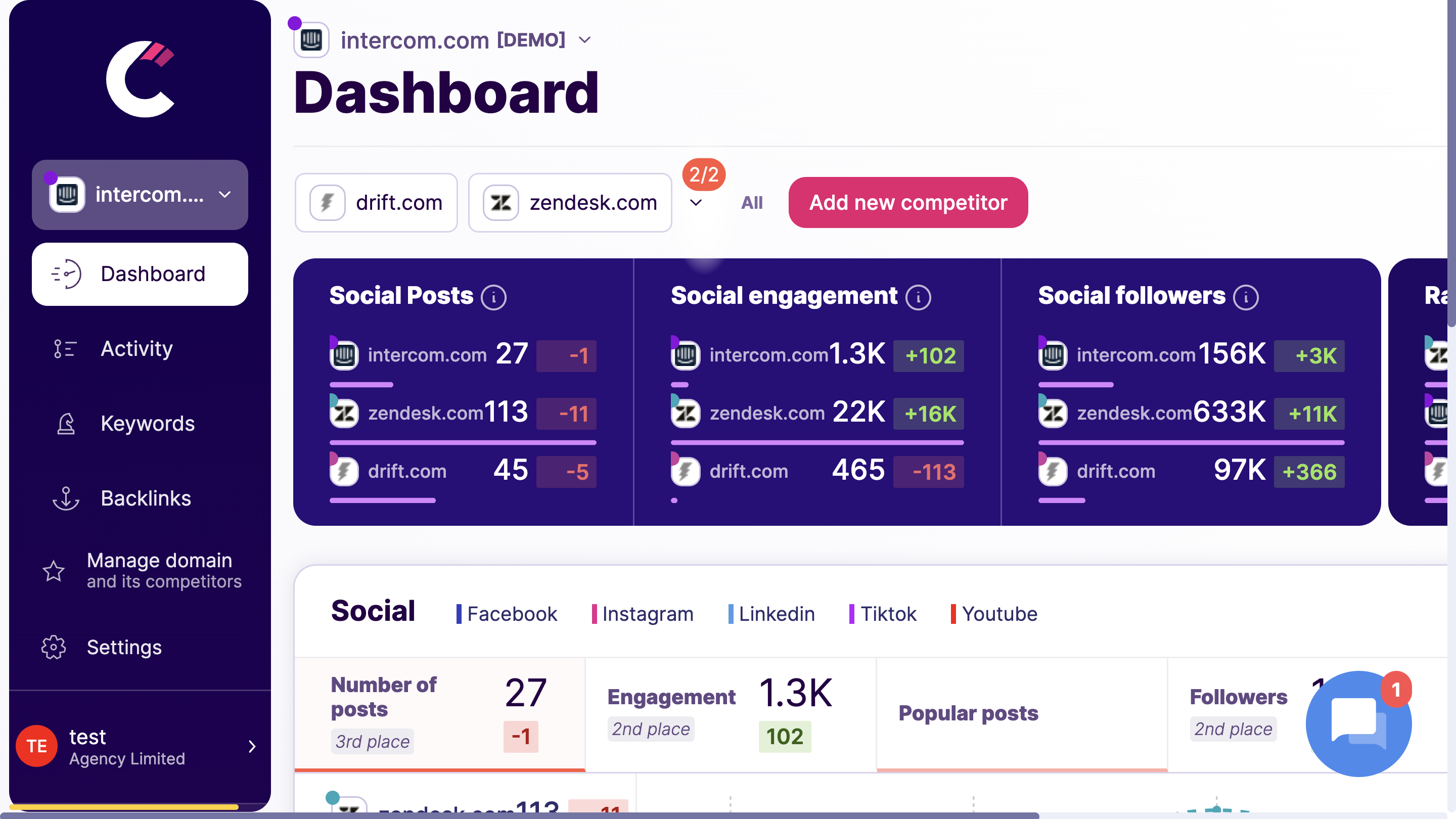
Step 5: Use the Dashboard for Advanced Social Insights
The dashboard in Competitors App offers a comprehensive view of when your competitors are receiving high levels of engagement. You can see which weeks or months they are most active and successful, giving you insights into their posting strategy.
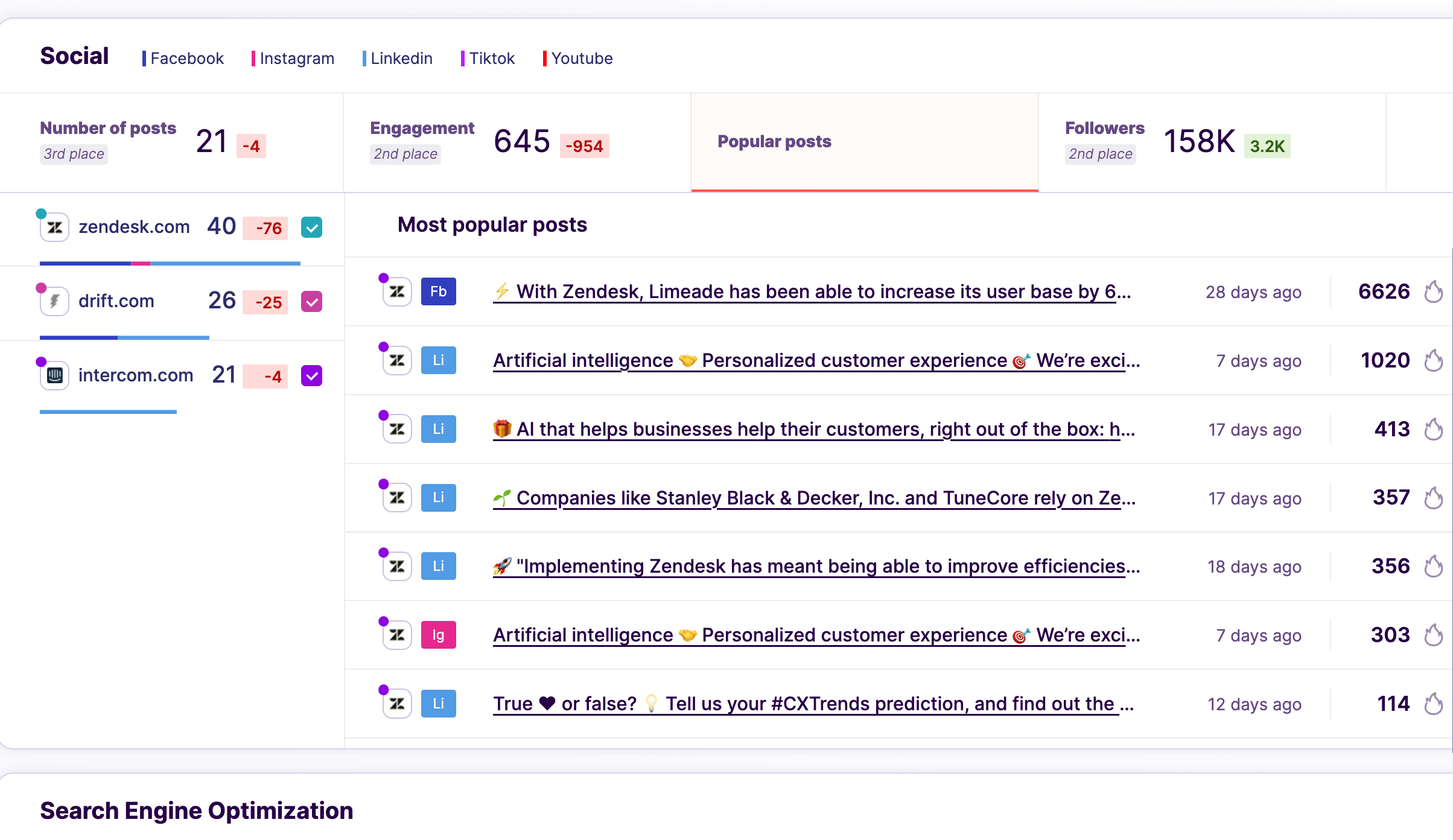
Step 6: Identify their best social media posts per channel
Through this analysis, you'll gain an understanding of which posts resonate with the audience and which don’t. This helps in shaping your content strategy.
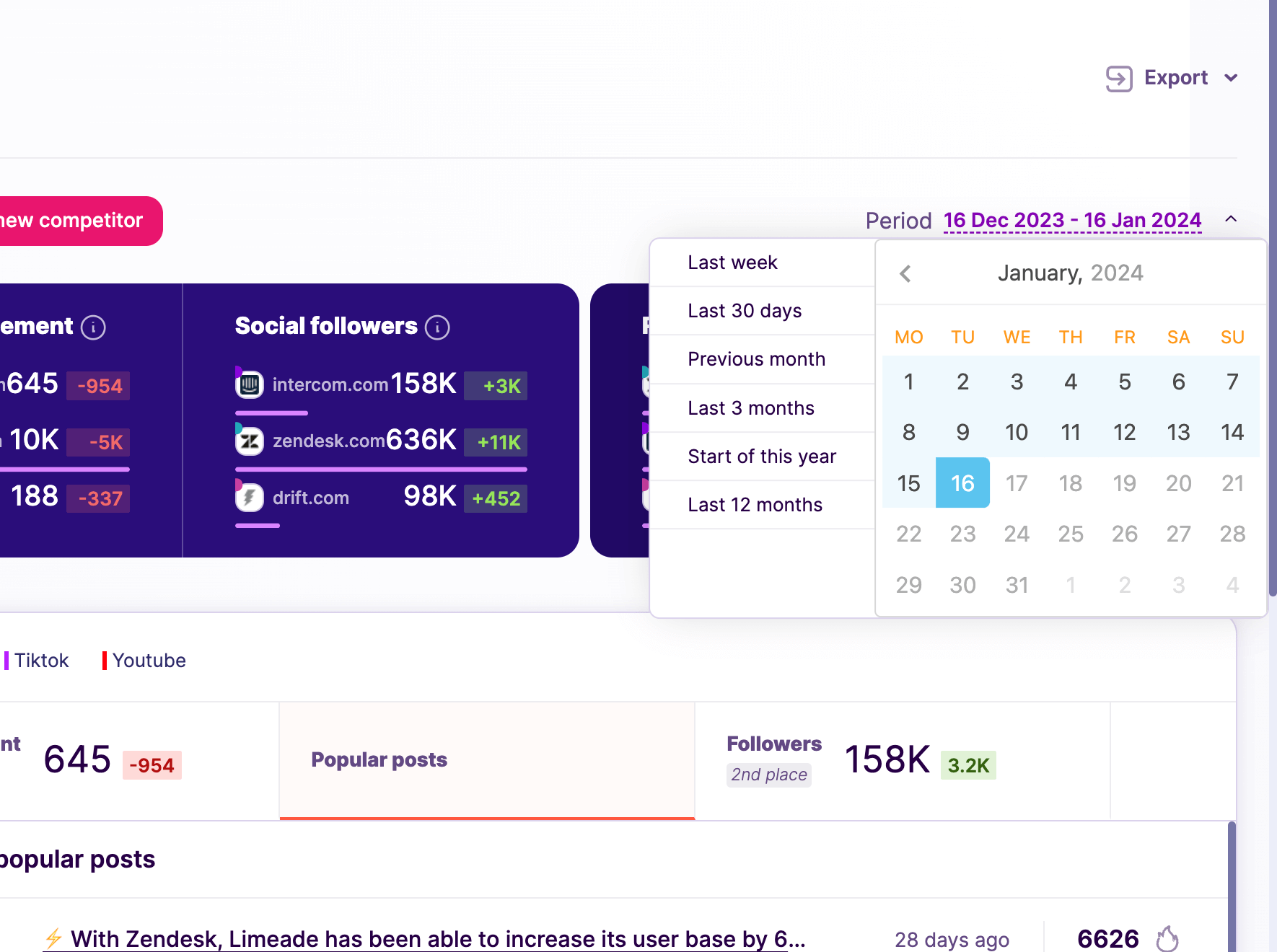
Step 7: Identify the best time and dates for posting
By observing the times when your competitors receive the most engagement, you can better plan when to release your own posts for maximum impact.
By following these steps with Competitors App, you will conduct a thorough analysis of your competitors’ social media strategies. This process not only provides insights into what works for them but also helps you refine your own approach to achieve better engagement and results.
Best Instagram Competitor Analysis Tools
Competitors App

Competitors App is a robust tool designed to provide detailed insights into competitors’ Instagram strategies, including engagement metrics, content performance, and advertising efforts. It simplifies competitor monitoring with real-time updates and reports.
Advantages:
- Comprehensive competitor tracking across multiple metrics.
- Real-time alerts for changes in competitor strategies.
- Intuitive interface for easy navigation.
Disadvantages:
- Limited customisation for smaller businesses.
Features:
- Engagement rate analysis.
- Content performance tracking.
- Advertising insights and alerts.
Pricing: Starts at $19/month.
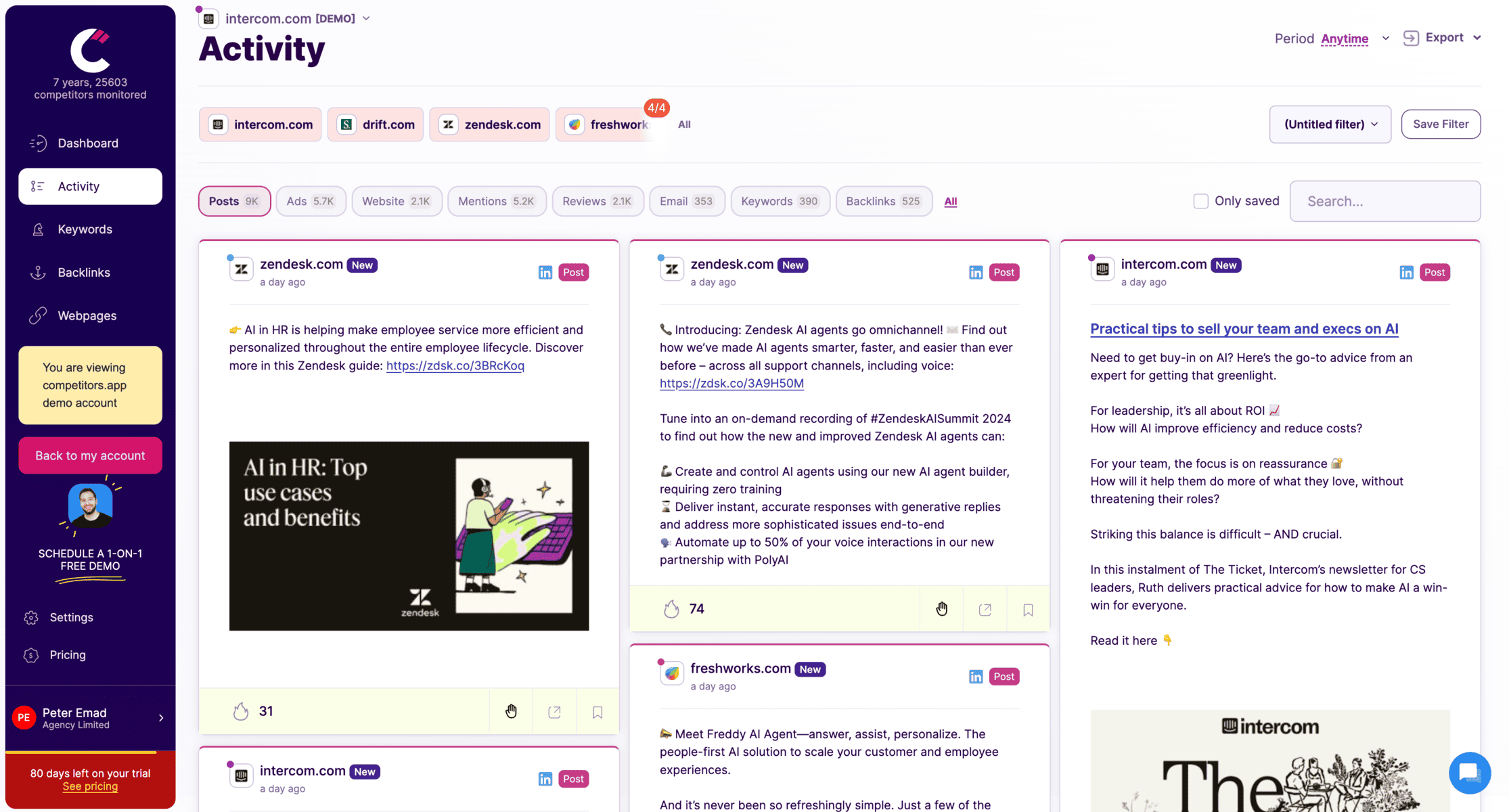
Tracks competitor social media updates across LinkedIn, Facebook, Twitter, and more.
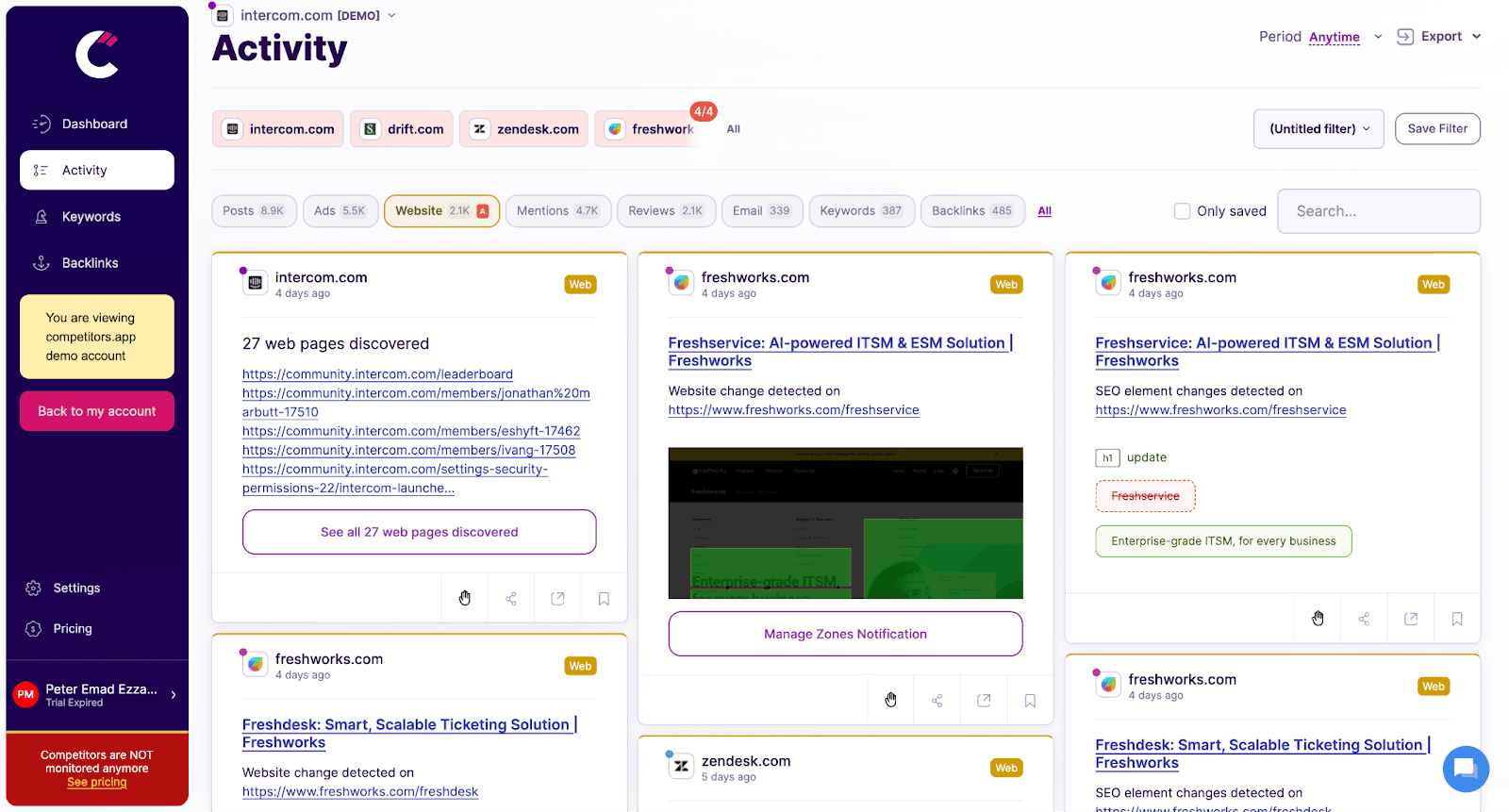
Monitors changes on competitors’ websites, such as product updates, pricing adjustments, and new messaging, providing instant alerts to help sales teams respond promptly.
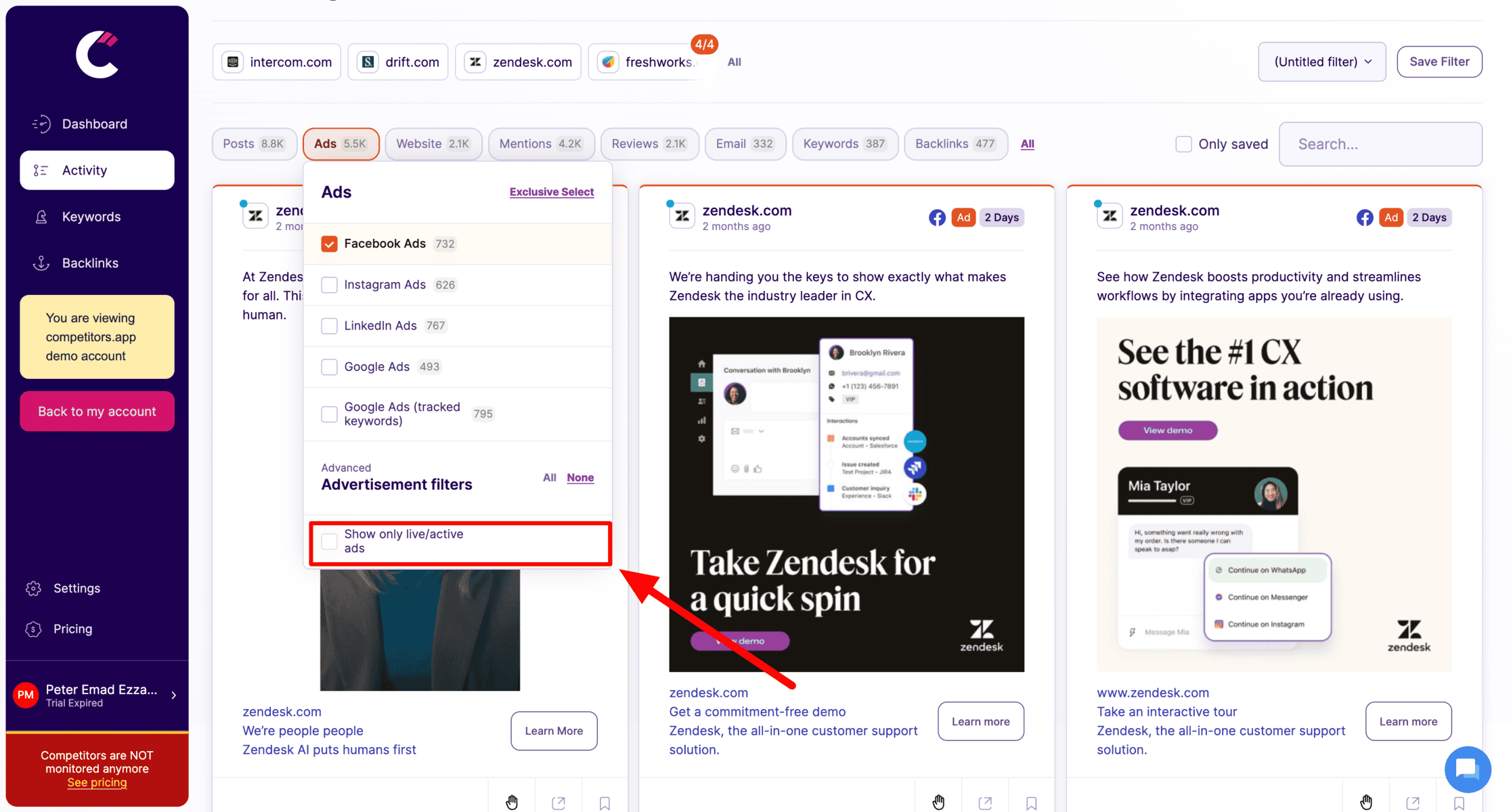
Tracks digital ad campaigns across platforms like Google Ads, Facebook, LinkedIn, and Instagram. It provides details on ad creatives, spending, and performance metrics, helping teams analyze successful ad strategies.

Analyzes competitors’ keyword strategies, organic rankings, and backlinks, allowing teams to refine their own SEO tactics and boost search visibility.
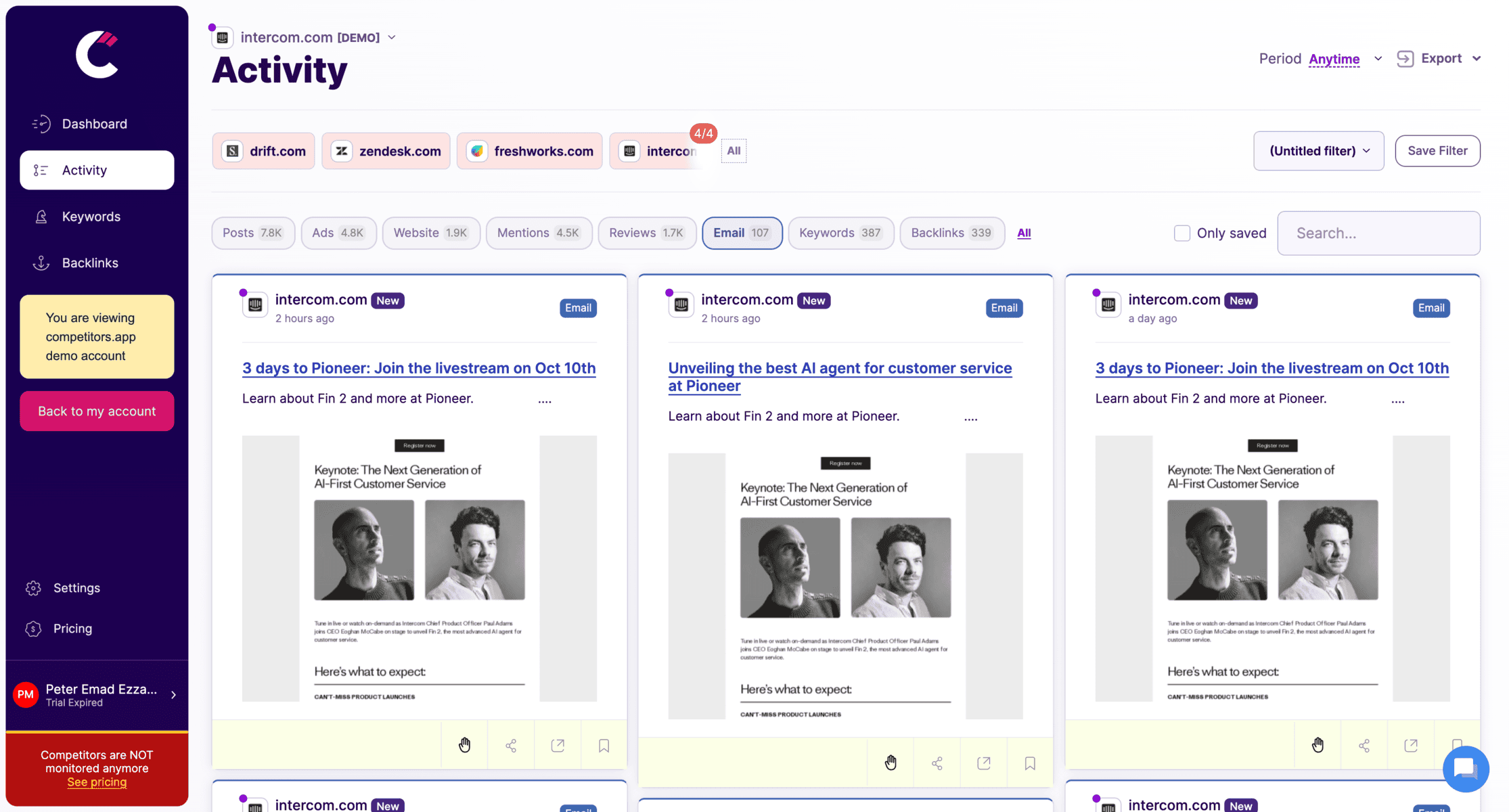
Tracks competitors’ email campaigns, including content, frequency, and engagement metrics, helping sales teams understand email tactics that drive engagement and conversions.
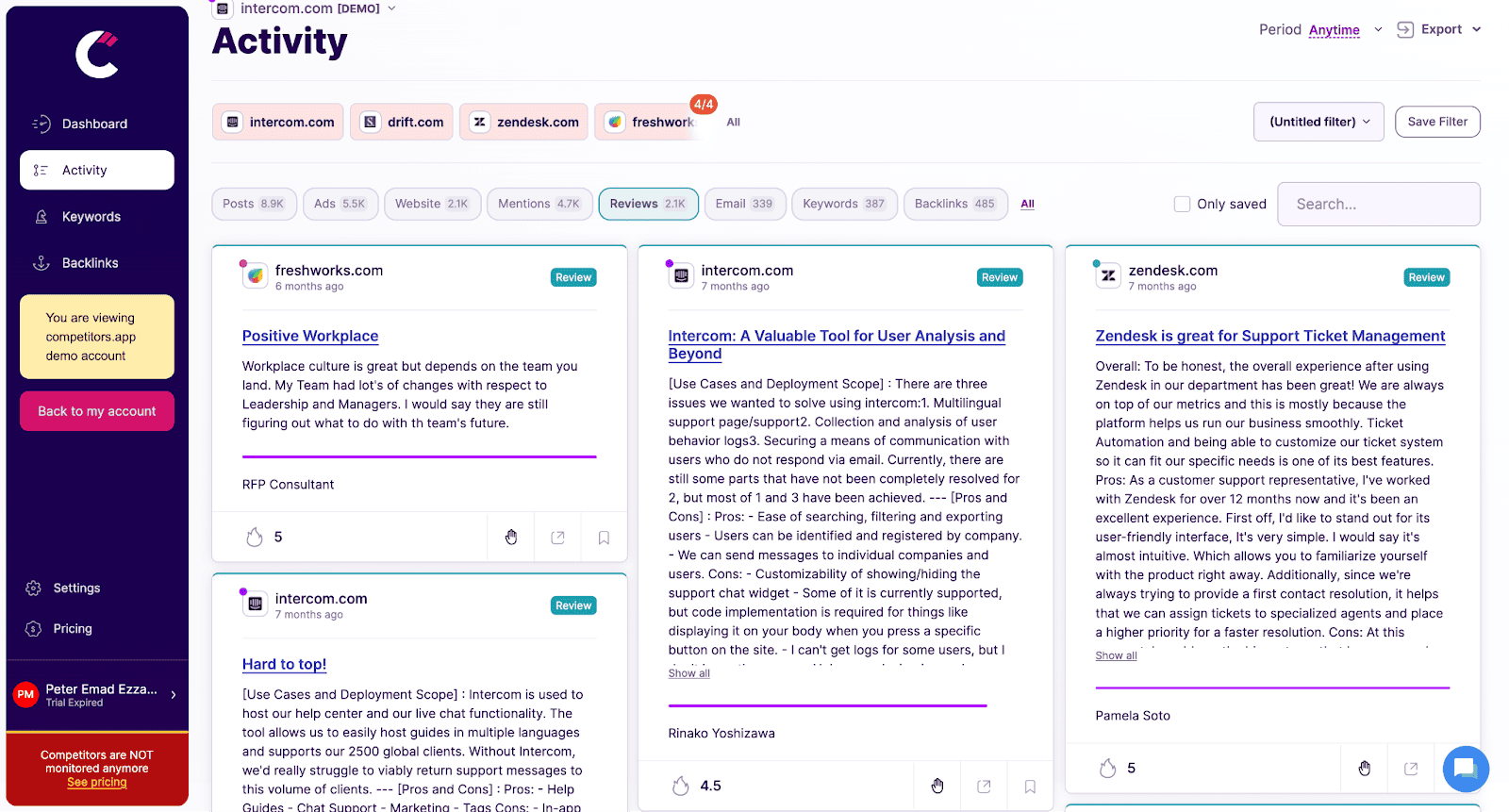
Analyzes customer reviews and ratings for competitors, providing insights into customer feedback, pain points, and product strengths, helping teams craft better sales pitches.
Sprout Social
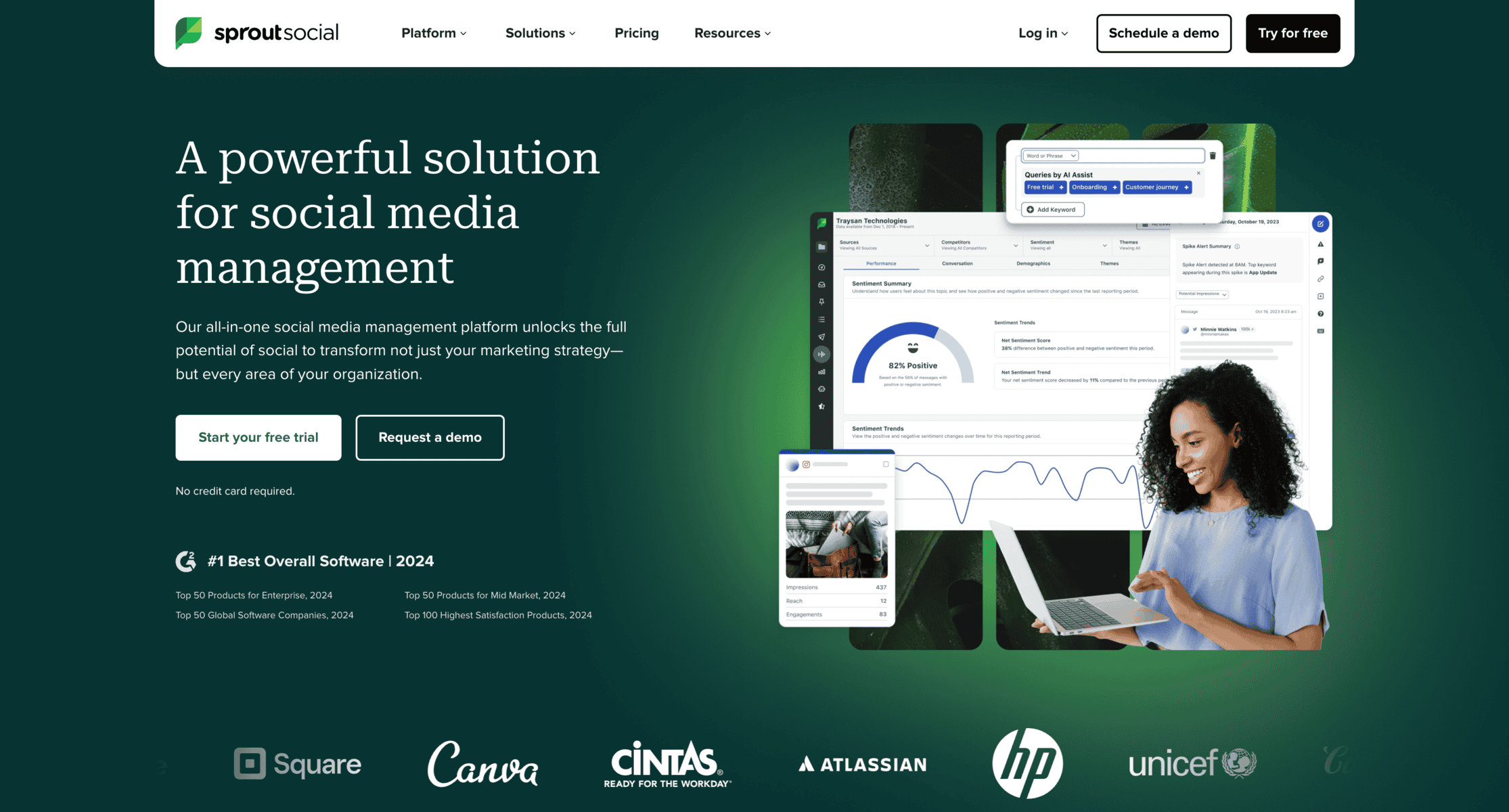
Sprout Social offers a powerful platform for social media management and competitor analysis. It provides in-depth reporting and scheduling features, making it ideal for tracking Instagram competitors.
Advantages:
- Comprehensive reporting dashboard.
- Integrates with other social platforms for broader analysis.
- User-friendly design for beginners and professionals.
Disadvantages:
- Higher pricing compared to competitors.
- Limited features in the basic plan.
Pricing: Starts at $249 per month.
Crayon
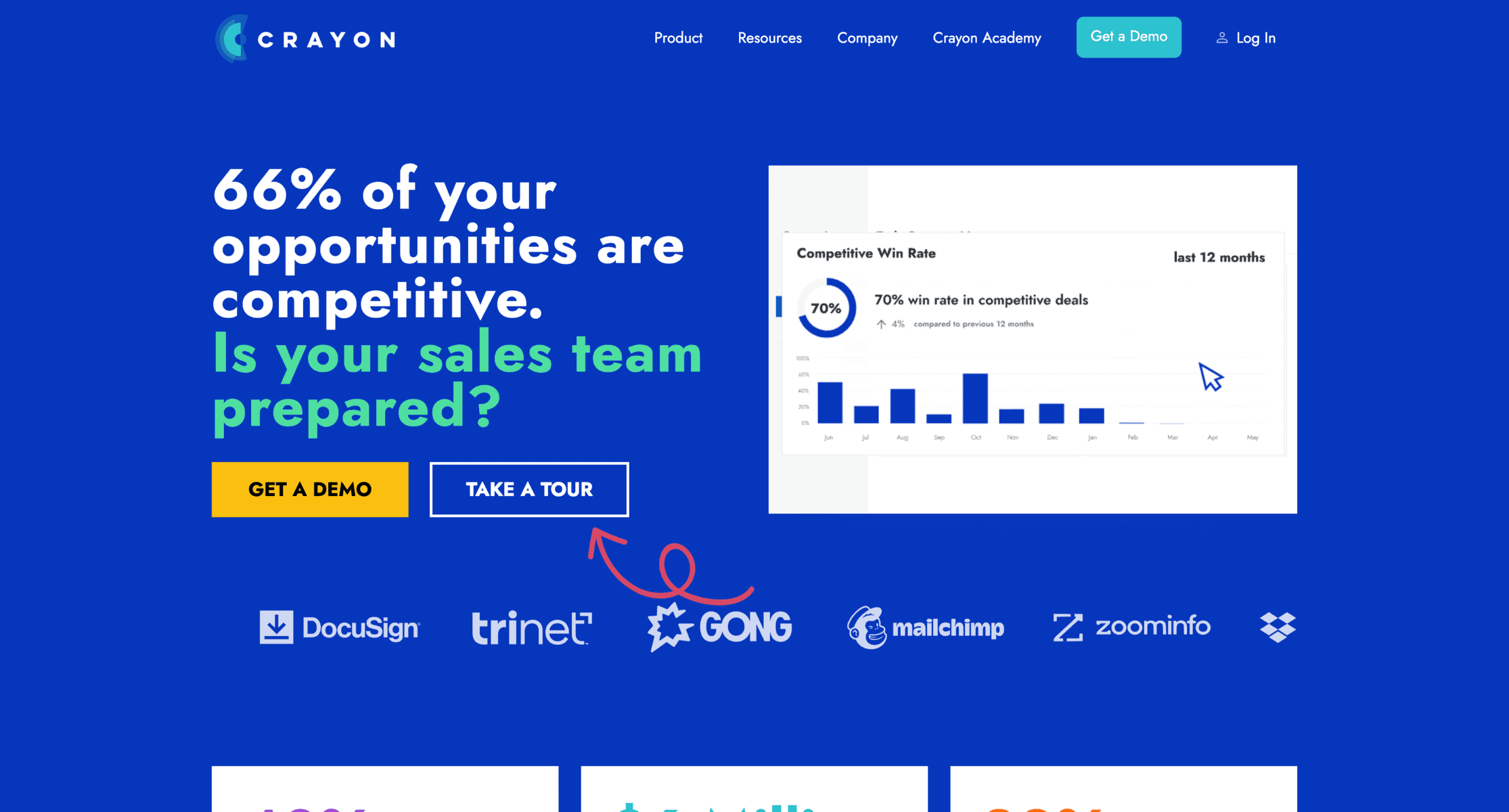
Features and Benefits:
- Specialises in competitive intelligence, including Instagram insights.
- Monitors visual and content updates from competitors.
- Provides actionable recommendations for improvement.
Advantages:
- Advanced AI-powered insights.
- Extensive tracking capabilities beyond Instagram.
- Ideal for long-term competitor monitoring.
Disadvantages:
- Steeper learning curve for new users.
- Higher pricing tier for full features.
Pricing: Custom pricing upon request.
Keyhole
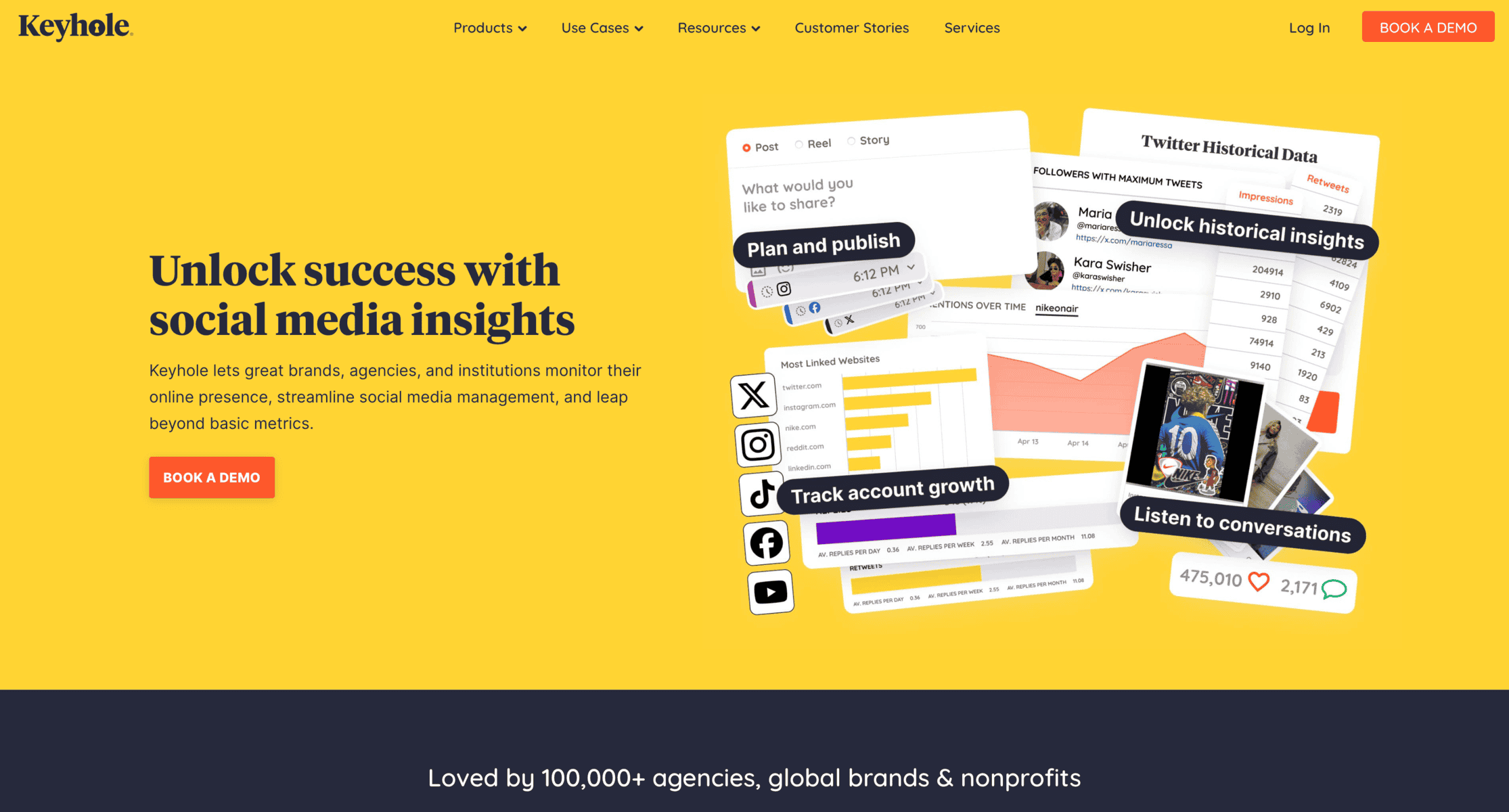
Features and Benefits:
- Tracks hashtag and keyword performance across Instagram.
- Provides competitor engagement and growth analytics.
- Allows live campaign tracking for real-time insights.
Advantages:
- Ideal for hashtag-based campaigns.
- Easy-to-navigate analytics dashboard.
- Affordable for small to medium businesses.
Disadvantages:
- Limited scope for deep competitor analysis.
- Focused more on hashtags and keywords.
Pricing: Starts at $49 per month.
Social Blade
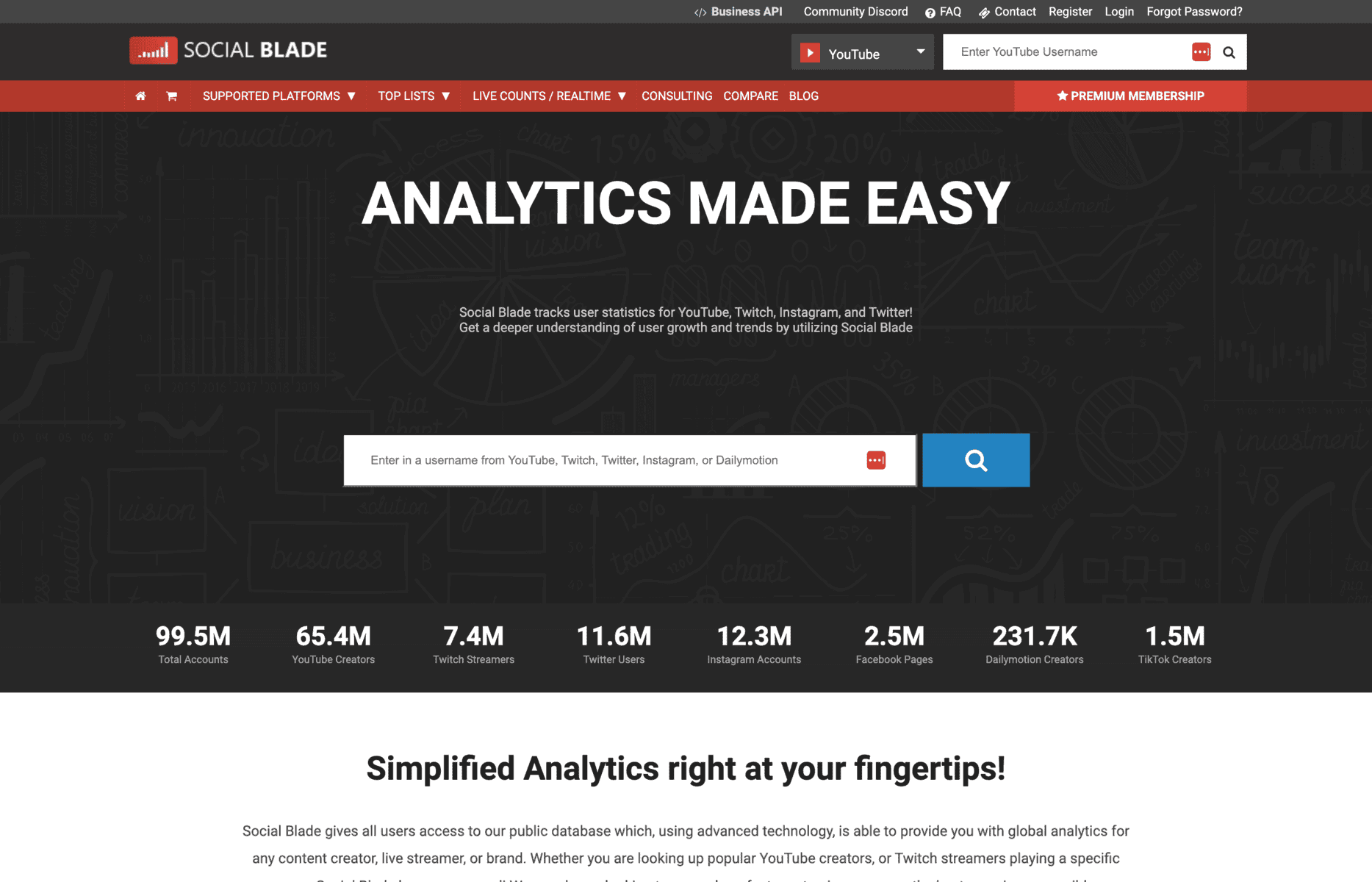
Features and Benefits:
- Provides data on follower growth, engagement rates, and top posts.
- Tracks competitors’ Instagram metrics over time.
- Generates easy-to-read performance charts.
Advantages:
- Free basic analysis features.
- Useful for high-level competitor insights.
- Simple and accessible for beginners.
Disadvantages:
- Limited detailed metrics.
- Lacks advanced analysis features found in other tools.
Pricing: Free basic features, premium plans start at $3.99 per month.
How to Analyze Your Instagram Competition Manually Without Tools
While tools can streamline the process, manual competitor analysis allows you to gain deeper insights. Here’s how to approach it:
- Visit Competitor Profiles: Manually review their posts, stories, and highlights to observe patterns and recurring themes.
- Monitor Hashtag Use: Take note of the hashtags they frequently use and assess their relevance and popularity.
- Analyse Post Engagement: Scroll through their recent posts to measure likes, comments, and shares, focusing on high-performing content.
- Track Stories and Reels: Watch their ephemeral content to understand how they engage audiences in real-time.
Top Key Metrics to Track in Your Instagram Competitors
Tracking the right metrics is essential for gaining actionable insights during your Instagram competitor analysis. These metrics help you understand your competitors’ strategies, strengths, and areas for improvement.
Followers
- Why It Matters: The number of followers indicates the size of a competitor’s audience and their potential reach.
- How to Use It: Compare their follower growth rate with yours to benchmark your progress.
Engagement Rate
- Why It Matters: Engagement rate measures how actively followers interact with posts through likes, comments, and shares.
- How to Use It: Identify posts with high engagement to understand what resonates with your shared audience.
Audience Growth
- Why It Matters: Tracking audience growth over time reveals how effectively competitors attract and retain followers.
- How to Use It: Analyse their growth spikes to determine which campaigns or content drove the increase.
Publishing Frequency and Behaviour
- Why It Matters: Consistent posting can improve visibility and engagement, while the timing of posts affects reach.
- How to Use It: Observe how often and when competitors post to optimise your own publishing schedule.
Top Posts and Content Performance
- Why It Matters: Identifying top-performing posts provides insights into what works well for competitors.
- How to Use It: Adapt these successful formats, themes, or hashtags to your strategy.
Hashtag Performance
- Why It Matters: Effective hashtags expand reach and improve discoverability.
- How to Use It: Track the most-used hashtags by competitors and evaluate their relevance to your audience.
These metrics provide a comprehensive overview of competitor performance, helping you refine your strategy based on data-driven insights.
Common Mistakes to Avoid in Your Analysis
While competitor analysis is a powerful tool, making certain mistakes can lead to inaccurate insights or missed opportunities.
Avoid these common pitfalls to ensure a successful analysis:
- Focusing Only on Follower Count: While follower count indicates reach, it does not reflect engagement or the quality of an audience. Always prioritise metrics like engagement rates and content performance.
- Ignoring Niche Competitors: Large competitors provide useful benchmarks, but niche competitors often reveal untapped opportunities specific to your audience.
- Overlooking Engagement Metrics: Analysing likes and comments without considering the context of audience size or relevance can lead to misjudgments.
- Failing to Track Progress Over Time: One-time analysis is not enough. Regular monitoring helps identify trends and the impact of new strategies.
- Copying Without Adapting: Blindly replicating competitor strategies without tailoring them to your brand can harm your authenticity and effectiveness.
By recognising and avoiding these mistakes, you can extract more meaningful insights from your competitor analysis, ensuring a data-driven approach to improving your Instagram strategy.
Frequently Asked Questions
What Is the Best Instagram Competitor Analysis Tool?
There are several excellent tools for Instagram competitor analysis, each offering unique features:
- Competitors App: Ideal for real-time monitoring and tracking competitor strategies.
- Sprout Social: Best for comprehensive analytics and reporting across multiple social platforms.
- Keyhole: Great for hashtag and keyword performance tracking.
The choice depends on your specific needs and budget.
How Can I Perform a Competitor Analysis on Instagram?
To perform a competitor analysis:
- Identify competitors within your industry.
- Review their content strategies, engagement metrics, and follower growth.
- Compare their performance against your KPIs.
- Use tools or manual research to gather insights.
Is There a Free Tool for Instagram Competitor Analysis?
Yes, Competitors App offers a free trial, allowing you to explore its real-time monitoring features and performance tracking capabilities. This is an excellent starting point for businesses looking to test out advanced competitor analysis tools.
